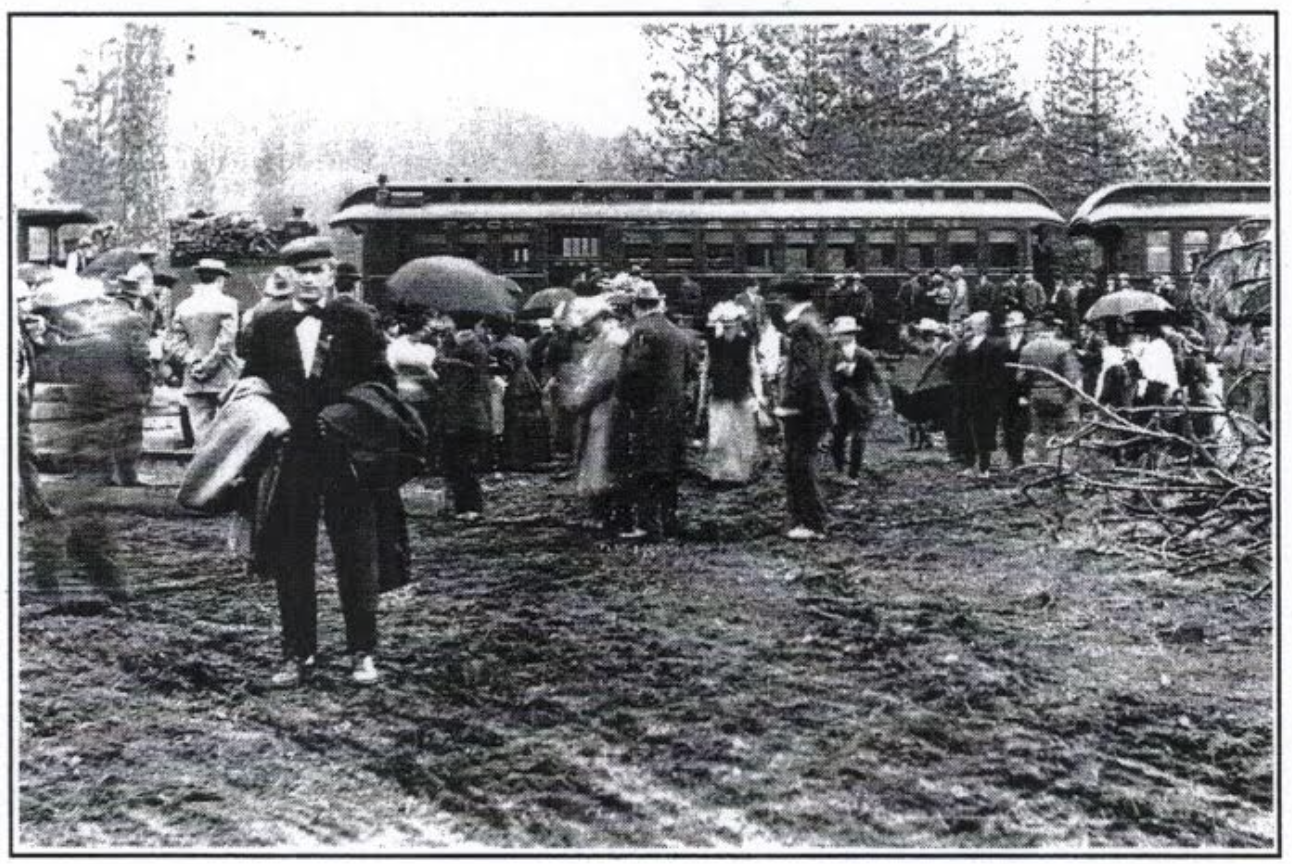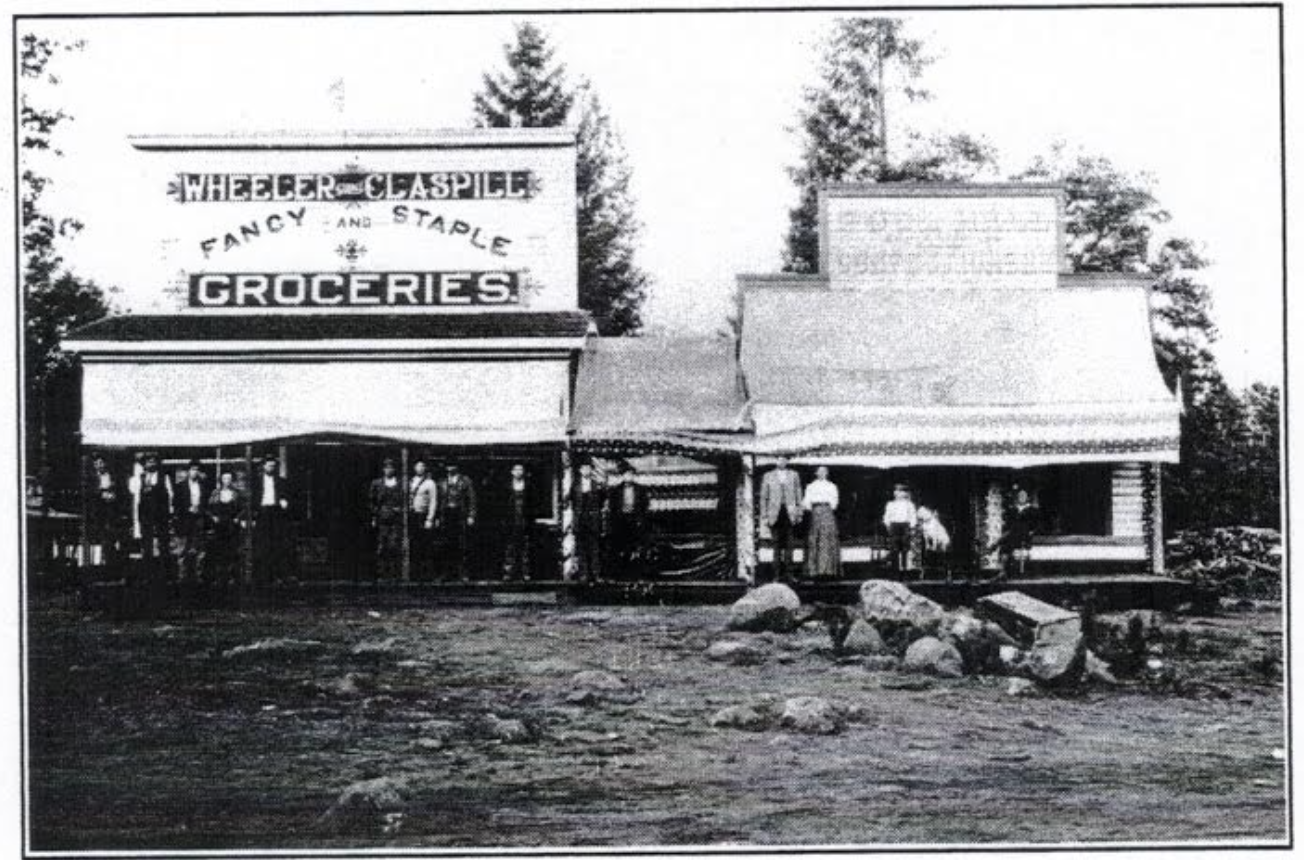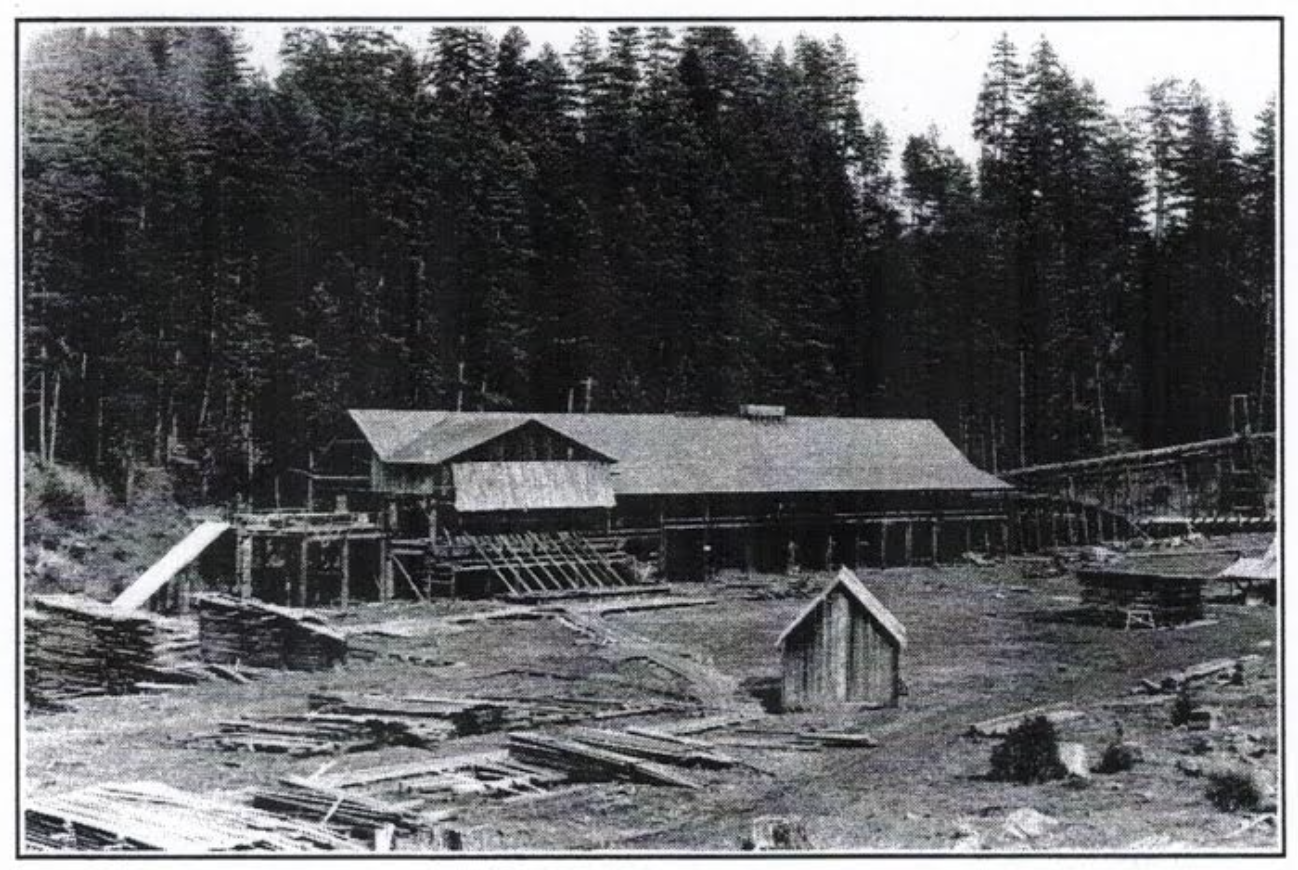History of Butte Falls
Timber harvesting in the began in the surrounding area in the late 1890s. In 1901 the Dewings Co. bought land surrounding the falls, and in early 1900s the Butte Falls Sugar Pine Company built a sawmill at the falls. No town actually existed in Big Butte Country until after 1900. In the early 1900's, Michigan-based lumbermen began cutting pine timber on the flats above Big Butte Creek. The mill led to the founding of the nearby town.
By 1910, the Pacific and Eastern Railroad reached Butte Falls from Medford.
For the next half century, the town’s destiny would be linked to the railroad. The fate of the various lumber companies depended on the railway. During the 1920s, the Wisconsin-based Owen-Oregon Lumber Company extended the line east of Butte Falls. The railroad logged the pine flats all the way to Mt. McLoughlin. The main line carried logs daily to a new mill on the outskirts of Medford.
During the Great Depression, the bankrupted Owen-Oregon firm turned its assets over to its Chicago-based creditors, who formed Medford Corporation in 1932. The new company struggled through the hard times of the Depression, as did the town residents. In 1936, the economy of Butte Falls got a slight boost when the Forest Service built a new ranger station on the southeast edge of town.
World War II brought renewed prosperity to the Pacific Northwest’s timber industry. Recent years have seen much controversy over logging in the Northwest. The region’s lumber industry has also experienced major changes in technology. Butte Falls has had to adapt to these changes.
By the early 1890s, a post office named Big Butte served the plateau’s ranchers. In 1906, the Butte Falls Sugar Pine Company built a sawmill at the falls and platted a town site on the flat immediately above Big Butte’s canyon; a larger mill soon followed.
The tiny community of loggers and millhands grew dramatically after 1910, when the Pacific & Eastern Railroad (P&ERR) arrived from the main rail line in Medford. The boom included a modern schoolhouse, a hotel, and the Pine Belt Bank. The P&ERR—rumored to have the backing of railroadman James J. Hill—never extended beyond the town. It did, however, provide access to extensive stands of pine and fir on the plateau, both on national forest and private land.
After 1918, logging-railroad spurs penetrated the woods east of Butte Falls. In the mid 1920s, the Wisconsin-based Owen-Oregon Lumber Company consolidates timberlands, purchased the railroad, demolished the falls mill, and built a large modern lumber mill in Medford.
1926 High School constructed
1931 Owen-Oregon bankruptcy, reorganized as Medford Corporation
1962 Medford Logging Railroad closed
1984 Harold Simmons corporate take-over of Medford Corporation
2016 Weyerhaeuser/Plum Creek Merger






